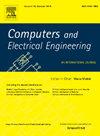Research and design of a dual buck micro grid-connected inverter using small signals
IF 4
3区 计算机科学
Q1 COMPUTER SCIENCE, HARDWARE & ARCHITECTURE
引用次数: 0
Abstract
Smart grids have spurred the development of small-scale photovoltaic power generation, with micro inverters becoming the preferred choice for such systems due to their advantages. However, existing micro inverters have limitations, such as straight-through bridge arms and low efficiency. In light of the experiences gained from previous micro grid-connected inverters, a dual Buck micro grid-connected inverter based on a small signal model is proposed. The front stage of this inverter comprises two flyback circuits, which are connected in parallel on the primary side of the voltage apparatus in order to ensure safe isolation. Furthermore, an RCS(The circuit consists of resistors, capacitors and switches) active clamp circuit is connected in parallel to the main switch of the front-stage flyback circuit, and the voltage total harmonic distortion(THD) of <3.0 %. The rear stage employs a dual buck circuit configuration, which offers a distinctive benefit in that it eliminates the necessity for straight-through bridge arms in comparison to a full-bridge circuit. Furthermore, a small-signal model is developed to facilitate the acquisition of current loop parameters. PLECS simulation software is employed to simulate the algorithm, compare the design parameters, and verify the accuracy of the design parameters. A 600 W prototype has been constructed for the purposes of data analysis, comparison and experimental validation. The efficiency of the proposed inverter is 97.2 %. This approach is valuable for the investigation and development of micro grid-connected inverters.
求助全文
约1分钟内获得全文
求助全文
来源期刊

Computers & Electrical Engineering
工程技术-工程:电子与电气
CiteScore
9.20
自引率
7.00%
发文量
661
审稿时长
47 days
期刊介绍:
The impact of computers has nowhere been more revolutionary than in electrical engineering. The design, analysis, and operation of electrical and electronic systems are now dominated by computers, a transformation that has been motivated by the natural ease of interface between computers and electrical systems, and the promise of spectacular improvements in speed and efficiency.
Published since 1973, Computers & Electrical Engineering provides rapid publication of topical research into the integration of computer technology and computational techniques with electrical and electronic systems. The journal publishes papers featuring novel implementations of computers and computational techniques in areas like signal and image processing, high-performance computing, parallel processing, and communications. Special attention will be paid to papers describing innovative architectures, algorithms, and software tools.
 求助内容:
求助内容: 应助结果提醒方式:
应助结果提醒方式:


